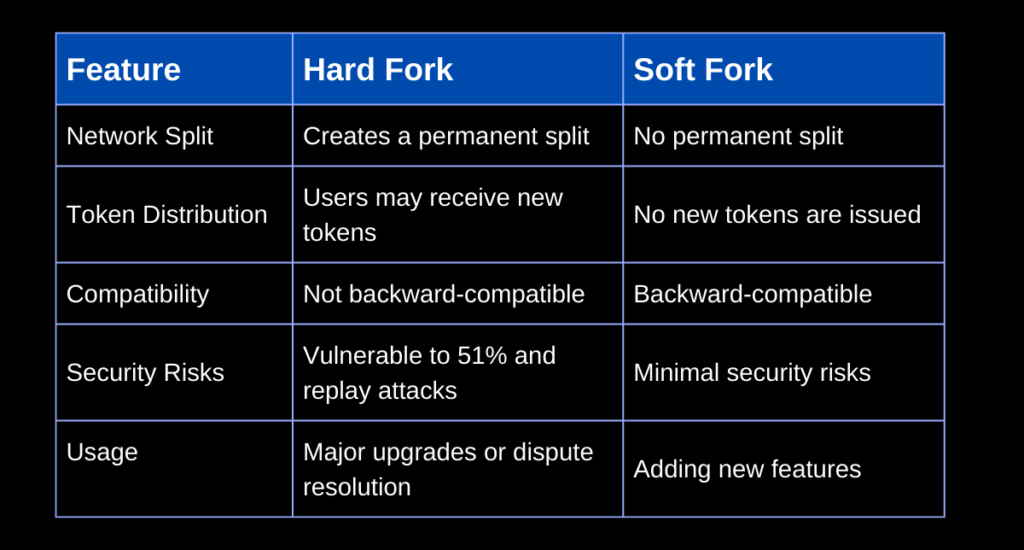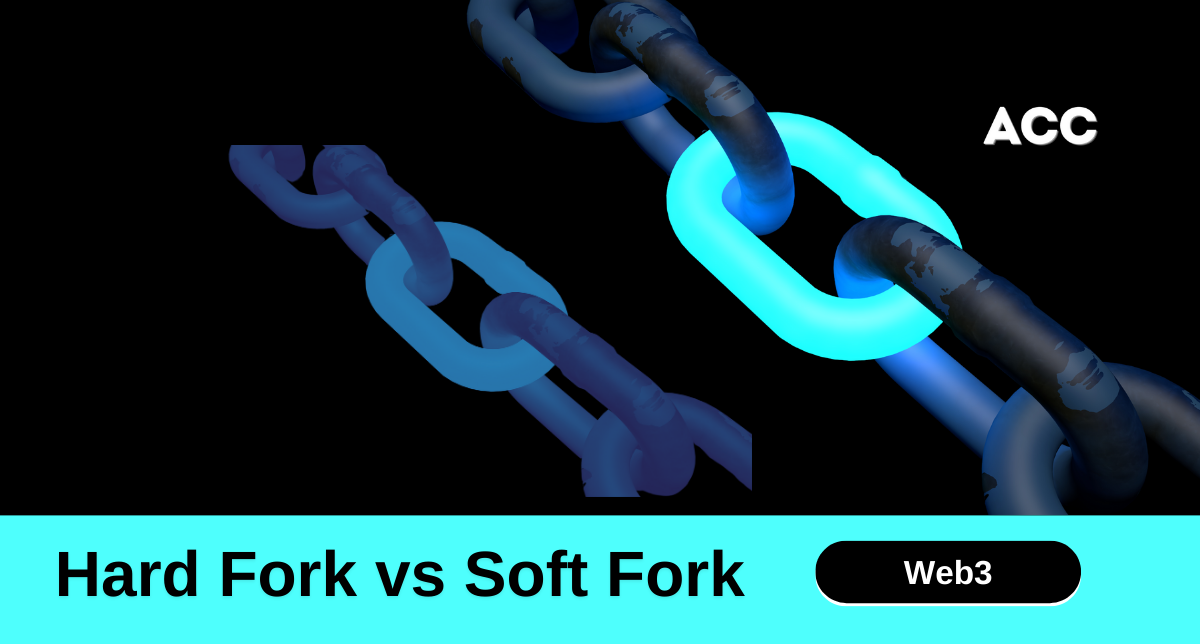Blockchain technology constantly evolves to address new challenges and improve functionality. This evolution often occurs through two primary mechanisms: hard forks and soft forks. Both refer to updates to the blockchain’s protocol, but they differ significantly in implementation and impact on the network. In this article, we’ll break down what these forks are, how they work, and their consequences for cryptocurrency networks like Bitcoin and Ethereum.
Understanding Blockchain Forks
A fork occurs when the underlying protocol of a blockchain undergoes changes. These changes can be minor or radical, initiated either by developers or the community, and they require nodes (the network participants) to adopt the new protocol version. Each node keeps a complete copy of the blockchain and ensures new transactions align with the network’s history. Forks occur to address bugs, add features, or improve scalability and security.
What is a Hard Fork?
A hard fork represents a radical change in the blockchain’s protocol, often resulting in a permanent split of the network. It is not backward-compatible, meaning nodes that do not upgrade to the latest version become incompatible with the new chain. Here’s how hard forks work:
- Chain Separation: A new path with updated rules is formed, and nodes that do not upgrade follow the older rules.
- New Tokens: In most cases, users holding tokens on the old chain also receive equivalent tokens on the new chain since both share the same history up until the split.
Network Security Risks: A hard fork can leave the blockchain vulnerable to 51% attacks, where malicious miners gain the majority of the network’s computing power, potentially altering transaction history.
Examples of Hard Forks
- Bitcoin Cash (BCH): A famous hard fork of Bitcoin, created in 2017 due to disagreements over block size. Bitcoin Cash supporters wanted larger blocks to reduce transaction fees, leading to a split.
- Ethereum vs. Ethereum Classic: Following the DAO hack in 2016, Ethereum underwent a hard fork to reverse the attack and refund investors. Those who opposed the rollback supported the original chain, now known as Ethereum Classic (ETC).
What is a Soft Fork?
A soft fork is a backward-compatible protocol update, meaning nodes running the older version of the software still recognize the new version as valid. Soft forks are used to introduce new features or rules without splitting the blockchain. Here are some key aspects:
- No Chain Split: Unlike hard forks, soft forks do not create a separate blockchain; all nodes eventually align with the updated rules.
- Programming-Level Updates: Soft forks typically involve technical changes, such as adding new functionalities or improving network efficiency.
Example of a Soft Fork
- SegWit (Segregated Witness): Implemented on the Bitcoin blockchain in 2017, SegWit increased transaction capacity by altering how transaction data is stored. It was introduced via a soft fork, ensuring older nodes could still participate in the network.
Accidental Forks
Occasionally, blockchains experience accidental forks, which occur when two miners find the same block simultaneously. The network resolves this by following the longest chain, abandoning shorter chains to maintain consensus. While rare, these short-lived forks can temporarily disrupt the network but usually do not affect transactions.

Why Do Forks Happen?
Hard and soft forks occur for several reasons, including:
- Adding New Features: Upgrading the blockchain with new functionalities.
- Security Improvements: Fixing vulnerabilities to protect the network from attacks.
- Dispute Resolution: Addressing disagreements within the community, such as block size debates.
- Correcting Errors: Reversing specific transactions, as seen in the Ethereum DAO hard fork.
Conclusion
Both hard and soft forks play crucial roles in the development of blockchain networks, ensuring their continuous improvement and adaptation to new challenges. While hard forks can lead to network splits and potential security risks, they are sometimes necessary for significant upgrades. In contrast, soft forks offer a safer, backward-compatible way to enhance the blockchain without disrupting consensus.
As blockchain technology advances, understanding the differences between hard and soft forks helps investors, developers, and users make informed decisions about their participation in cryptocurrency networks.

A.k.a – alpha girl. Vinita is the founder of Alphachaincrypto. An English Lit Majors, Vinita bumped into Web3 in 2020 only to realise that tech was her calling. Later, Mathreja worked for some notable brands like Near Education, Biconomy, CoinDCX and top of the line crypto start ups.





